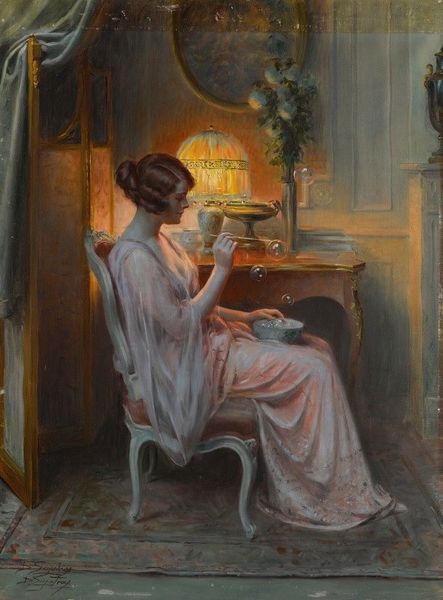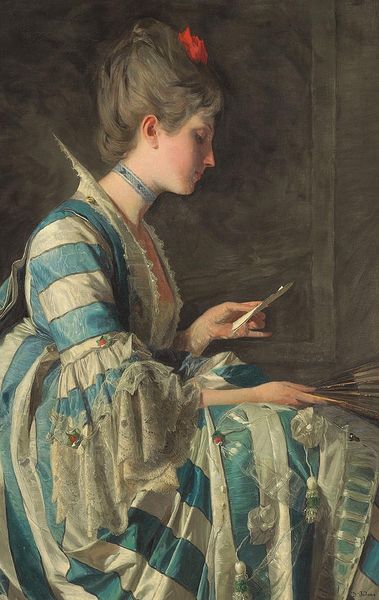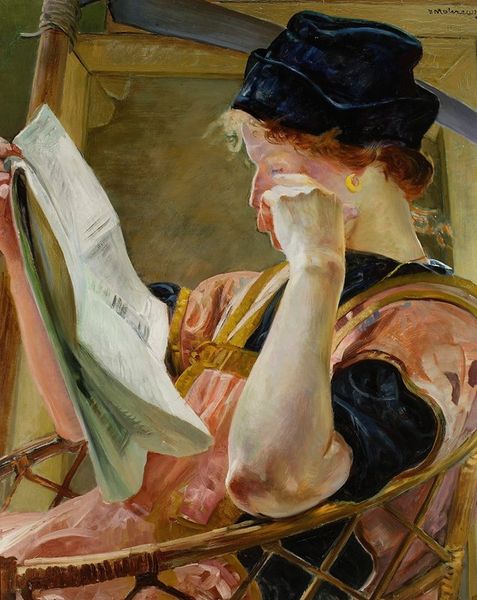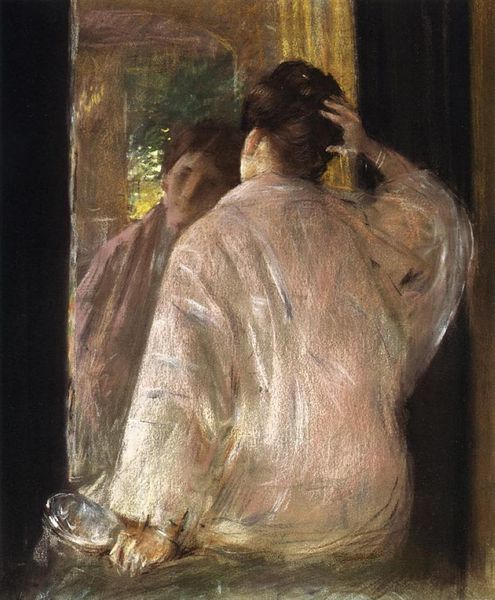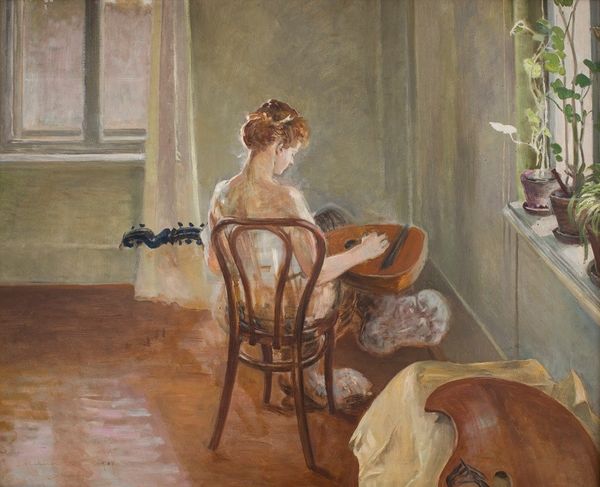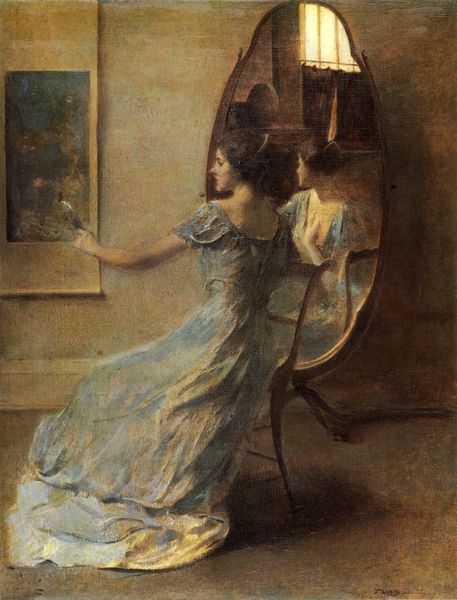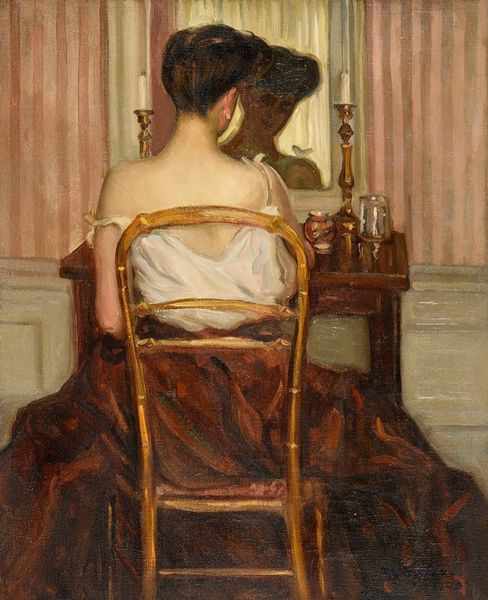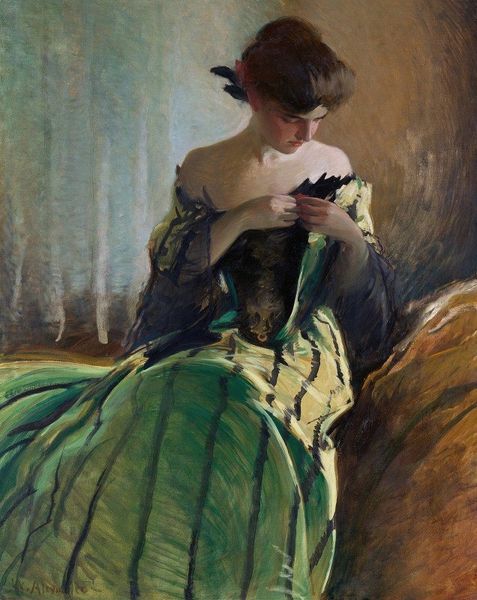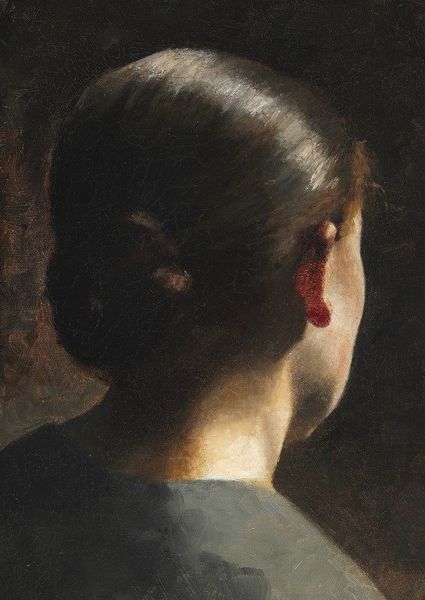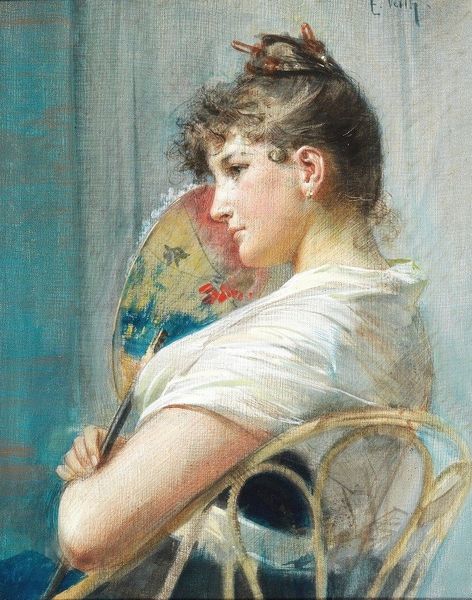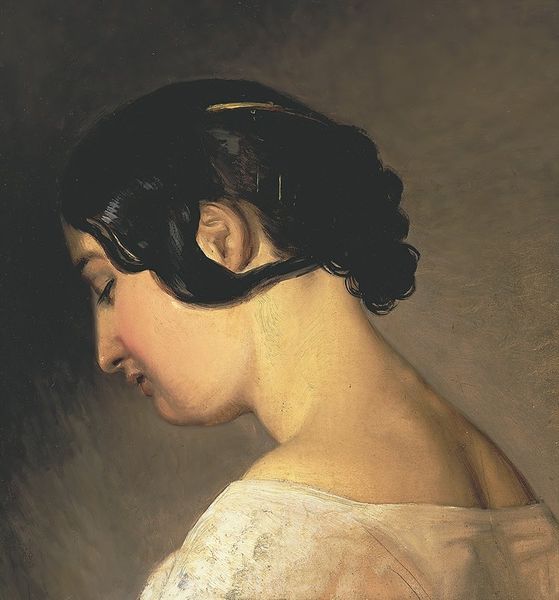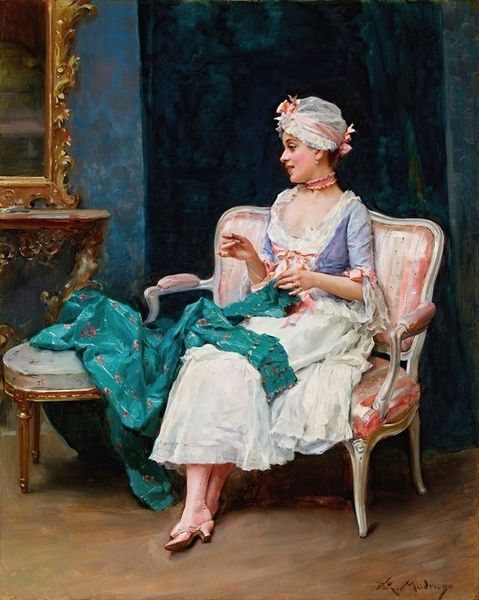
drawing, pastel
#
portrait
#
drawing
#
figurative
#
impressionism
#
figuration
#
oil painting
#
intimism
#
pastel
#
portrait art
Copyright: Public Domain: Artvee
Editor: Here we have Albert Edelfelt's "Dalin's Spring Song," created in 1883, using pastel. It has a delicate, almost wistful quality. The woman seems lost in her own world. How do you interpret this work? Curator: It's tempting to see this as simply a pretty picture, but let's consider the constraints placed upon women in the 19th century, particularly within the domestic sphere. Edelfelt, as a male artist, is depicting a woman's engagement with art, in this case, music, within the confines of her home. But does her engagement feel empowering, or subtly indicative of limitation? What does her downward gaze suggest to you? Editor: That's a good question. I see a quiet intensity, but also maybe a sense of confinement, as you said. Her world is circumscribed. Curator: Exactly. Consider also the role of clothing and adornment here. The black choker, the detailed dress – these weren’t just aesthetic choices; they communicated social status and adherence to certain societal expectations. How might these details intersect with our understanding of her agency, or lack thereof? And isn’t there an echo of similar situations still today? Editor: That makes me think about how women are still often judged, and even defined, by their appearance and domestic roles. Even creative women find these roles often confine them. Curator: Precisely. By examining these visual cues within their historical and social context, we can begin to unpack the complex power dynamics inherent in representations of women in art and beyond. This work isn't just about a woman playing music; it's about the limited possibilities afforded to her, and how those limitations might still resonate today. Editor: That's a really interesting point of view. It’s a reminder that art can be both beautiful and a critical reflection of society. Curator: Indeed. It is about questioning and considering whose stories are told and how. That makes the experience and consumption of art truly democratic.
Comments
No comments
Be the first to comment and join the conversation on the ultimate creative platform.
